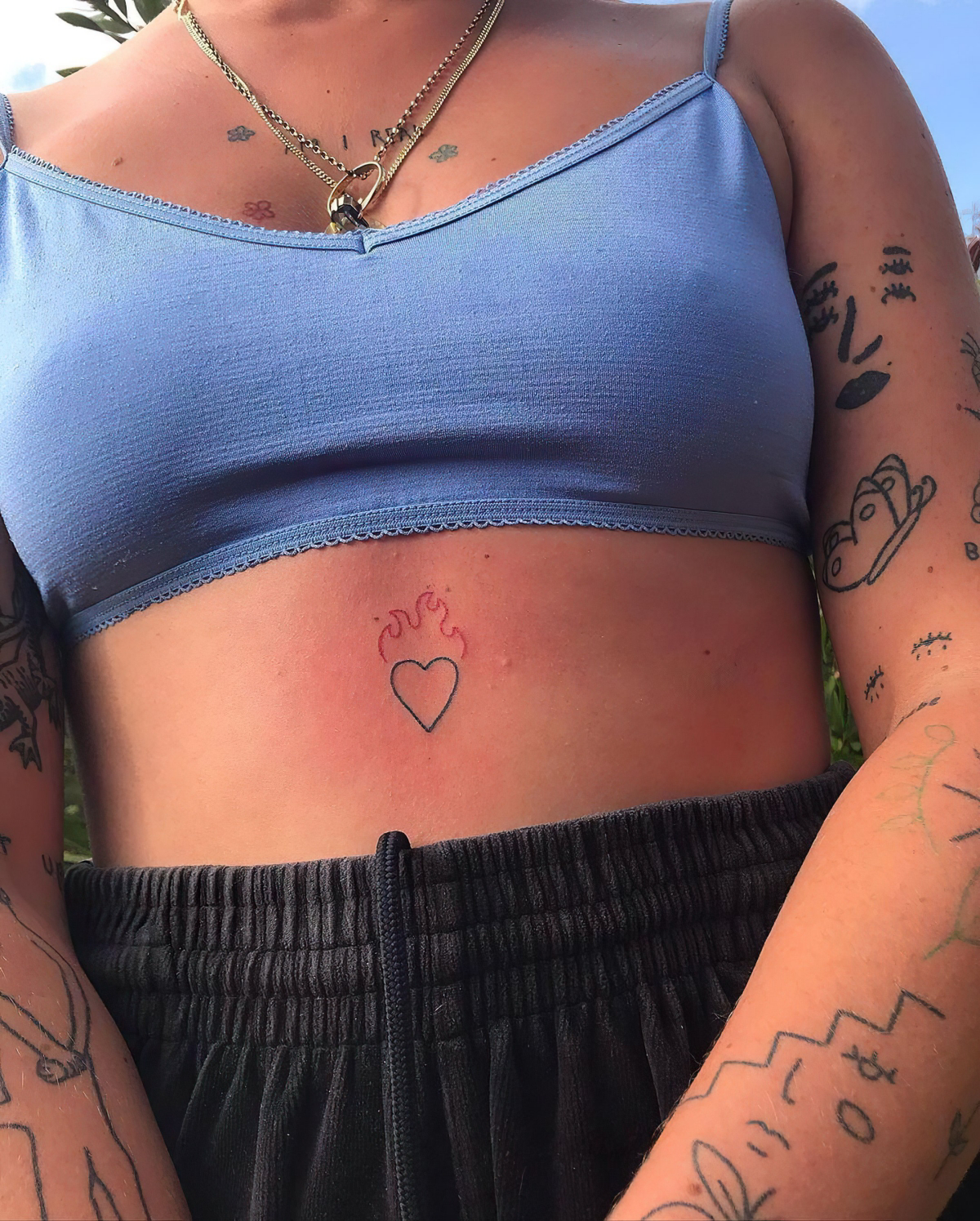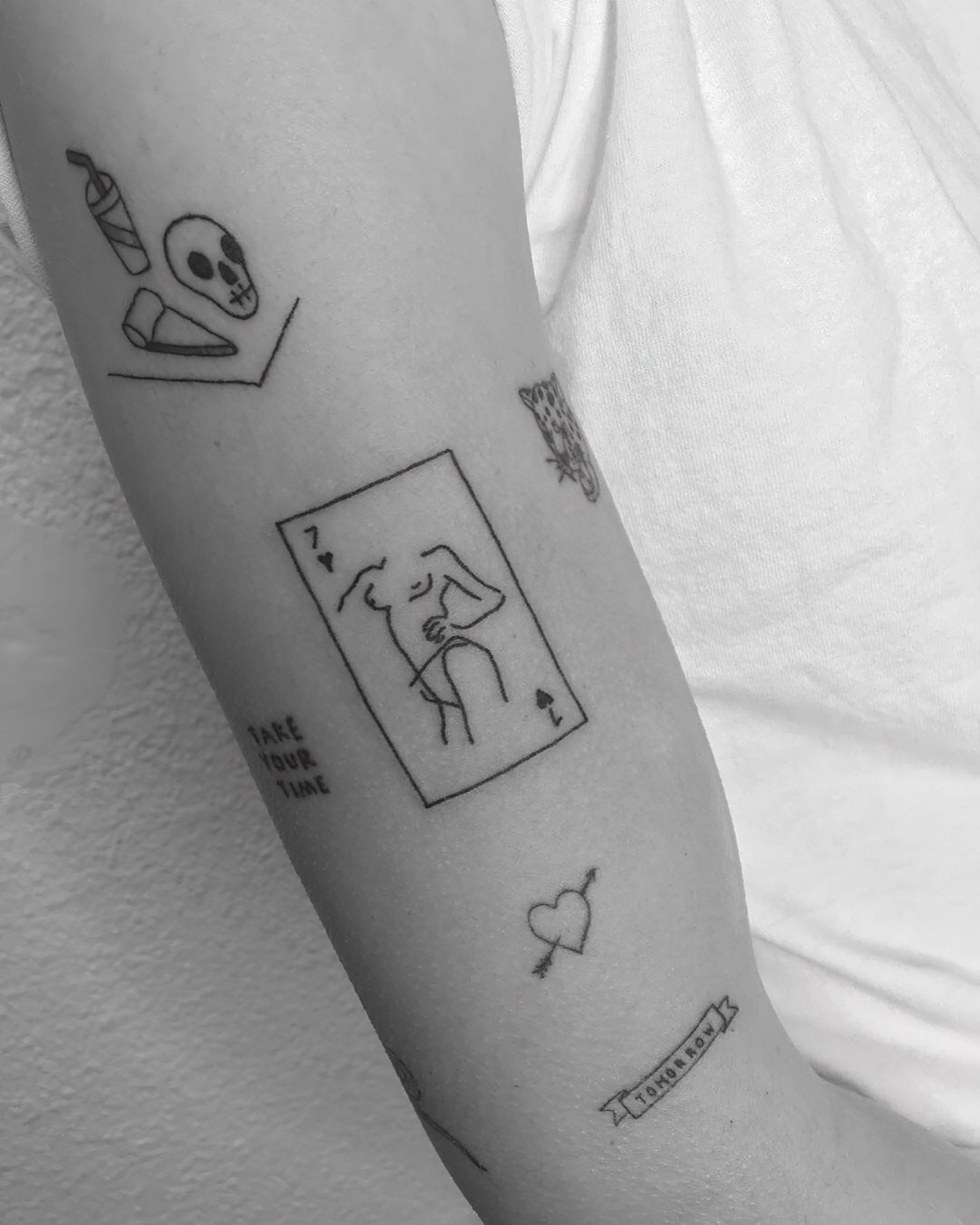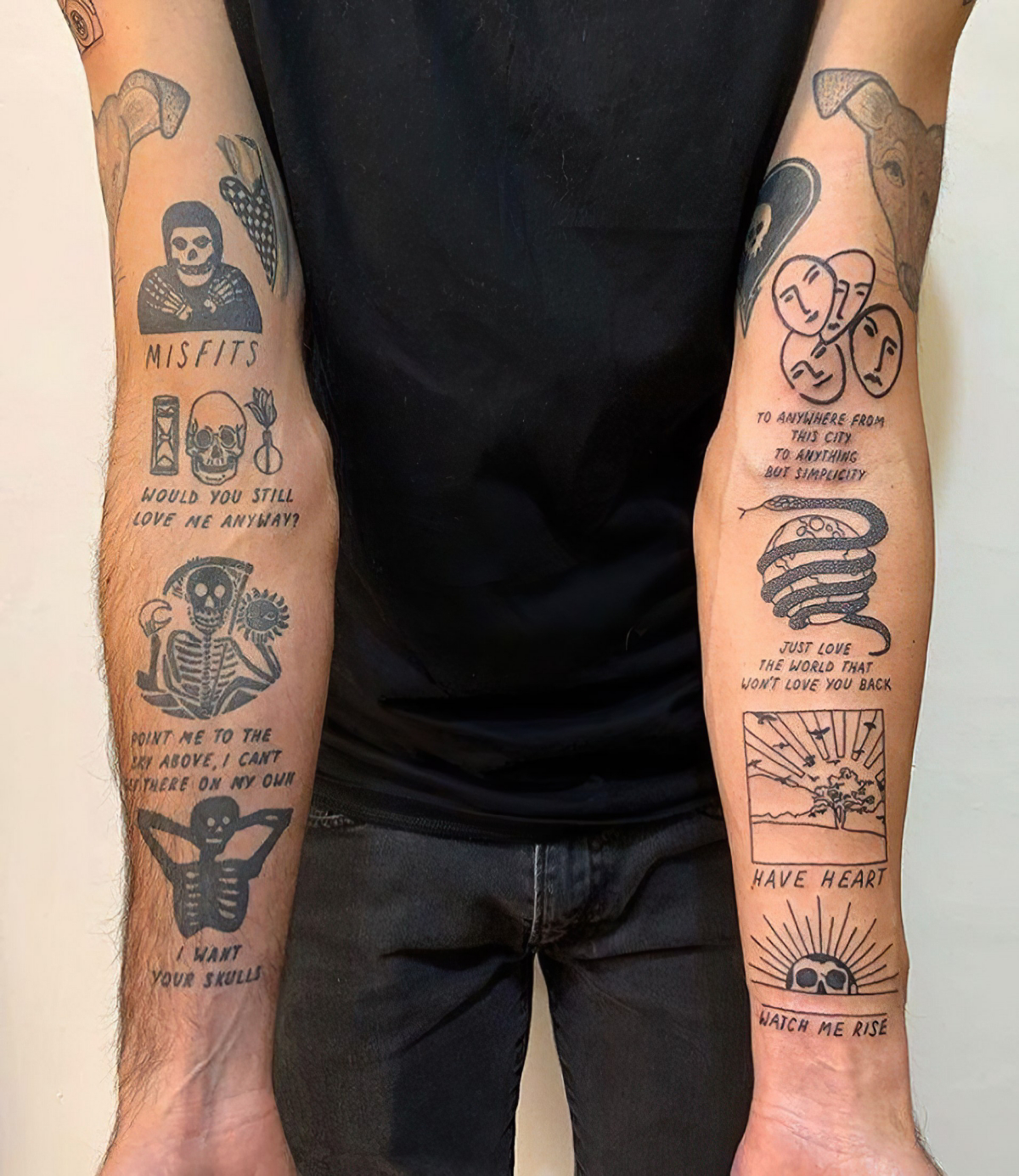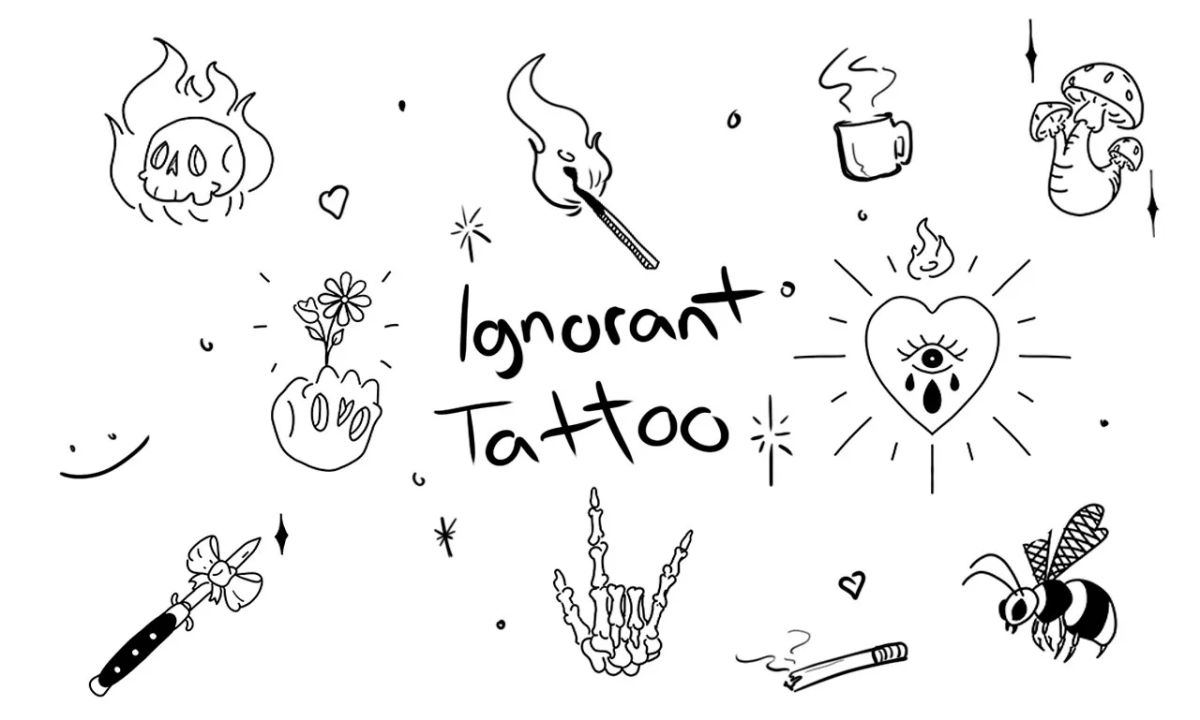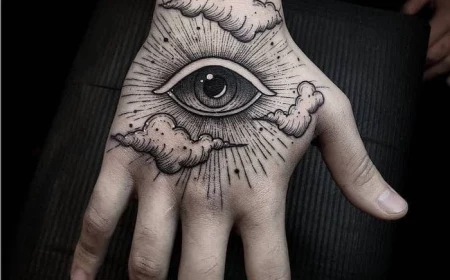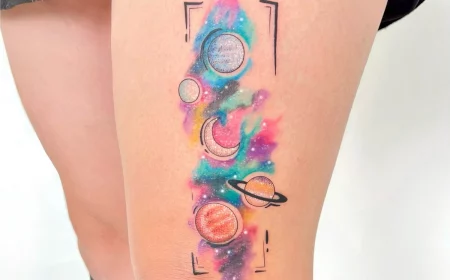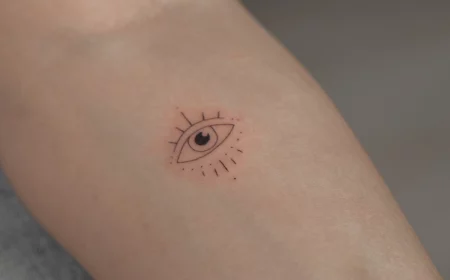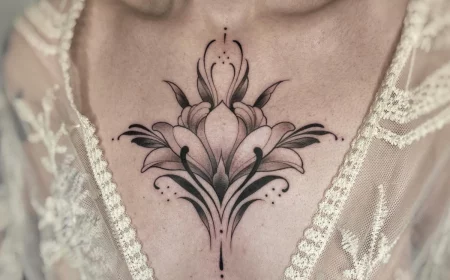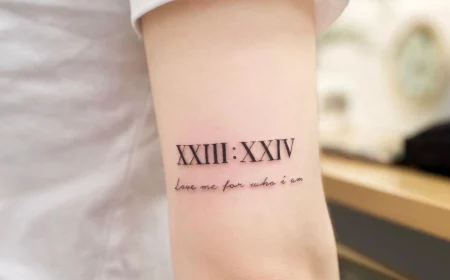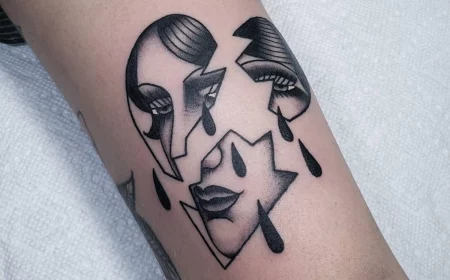Thinking About an ‘Ignorant Style’ Tattoo? Here’s What You Actually Need to Know
I’ve been slinging ink for over fifteen years, and in that time, I’ve seen styles come and go and come right back around again. One of the most misunderstood, by far, is the “ignorant” style. Honestly, the name itself causes half the confusion. I have clients come in asking for it, but what they really mean is they want something simple and bold. Then you have other artists who turn their noses up at it, calling it a lazy excuse for not learning proper technique. Both of them are missing the point completely.
In this article
This isn’t some fly-by-night trend. It’s a raw, intentional kind of art with deep roots in things like graffiti and punk culture. It’s not about being unable to draw; it’s about choosing to ignore the traditional, academic art rules. It’s about creating something that feels immediate, personal, and maybe a little bit funny. From my side of the needle, it’s a serious technical challenge. A super simple design leaves zero room for error. Every single line has to be perfect because, well, it’s all you see.
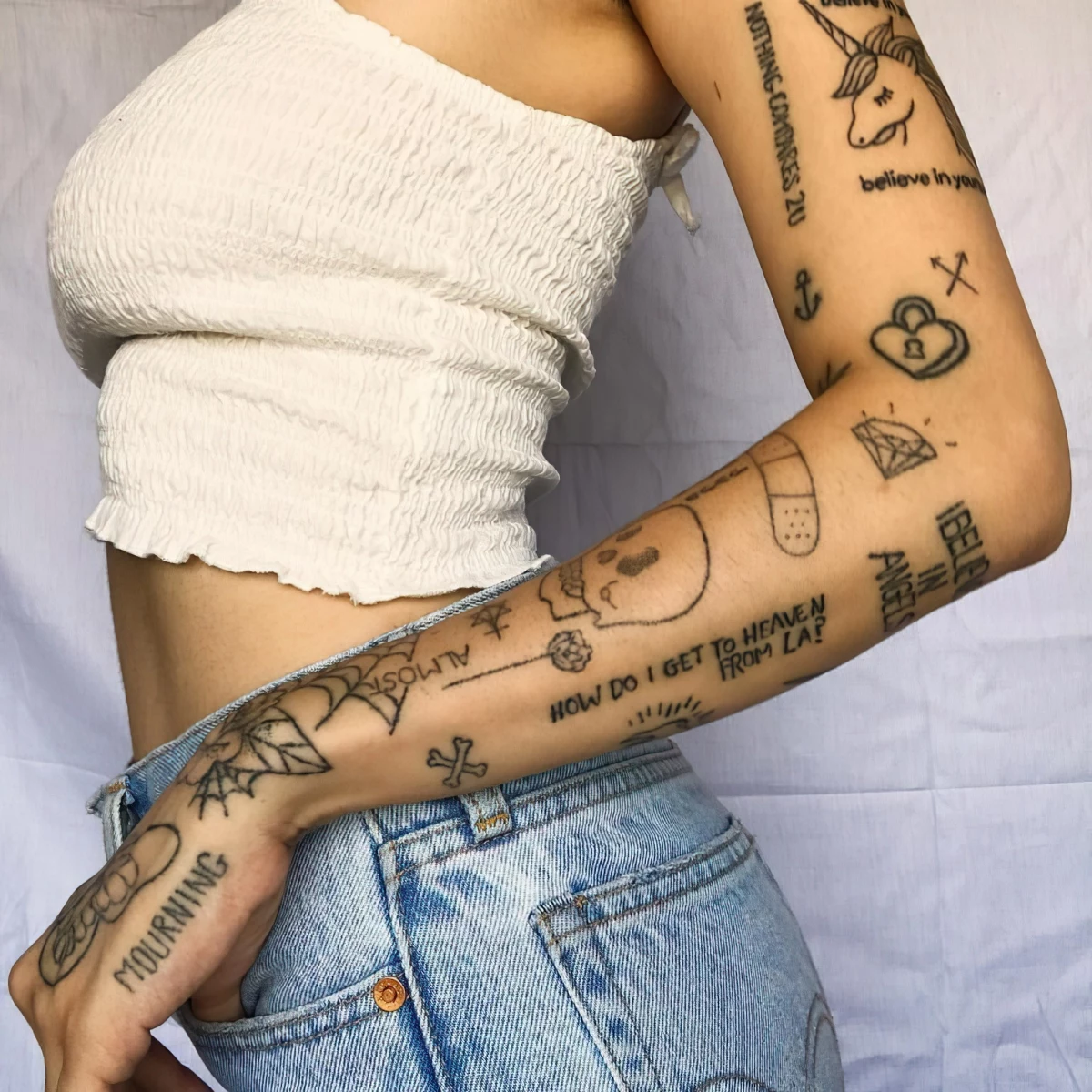
So let’s get into what this style really is, how you can tell the good from the bad, and how to make sure you get a piece you’ll love forever.
So, What’s the Real Deal with the Name?
Okay, let’s be real: the term “ignorant” is meant to be a little provocative. It started as a way to describe a style that deliberately ignored the classic rules of American and Japanese traditional tattooing. Those styles are built on a solid foundation of principles for shading, composition, and subject matter. The artists who pioneered this new wave looked at those rules and decided to sprint in the other direction.
They went for a raw, almost childlike simplicity. Think of it like punk rock. A classically trained musician might hear a three-chord song and think it’s basic. But the energy, the raw emotion, and the directness of it? That’s the entire point.
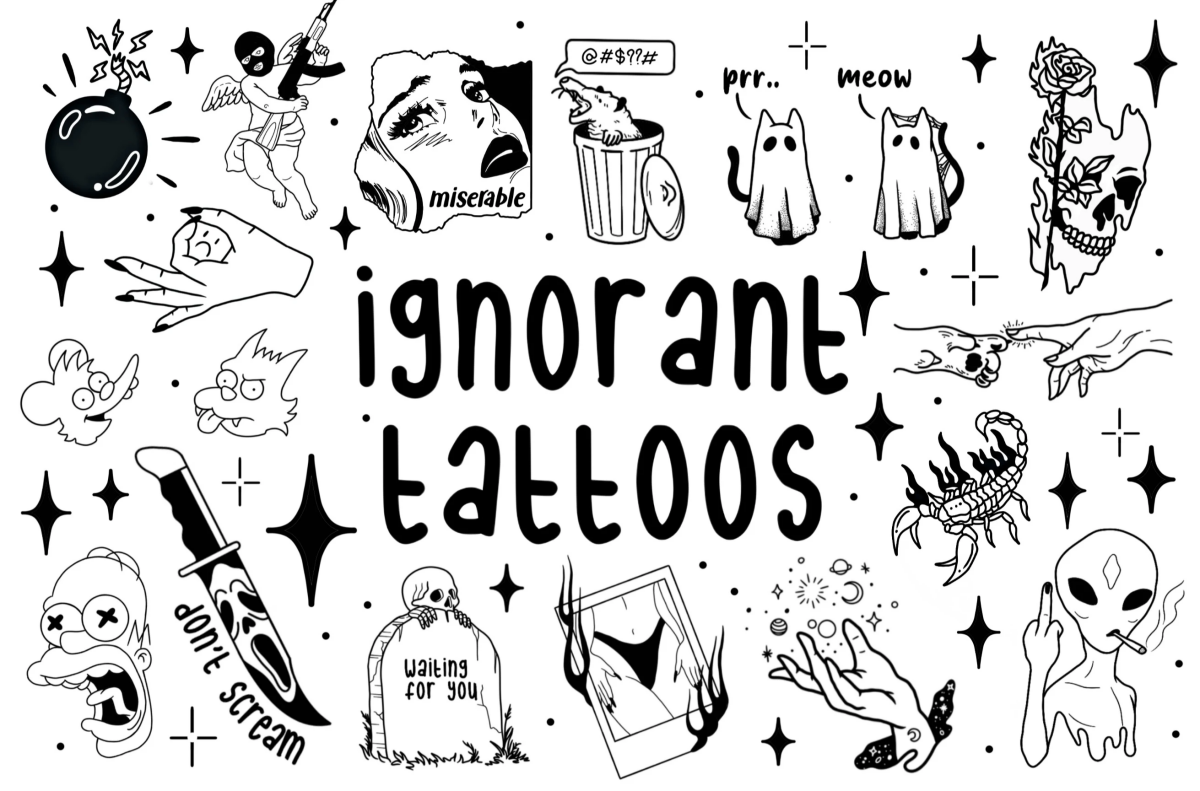
This style pulls its inspiration from outsider art—graffiti tags scrawled on a train car, weird doodles in a high school notebook, or old-school, low-budget cartoons. The goal isn’t a perfect, photorealistic image. The goal is to capture a feeling, a vibe, or a joke in its purest, most direct form. It’s a reaction against the hyper-detailed, super-realistic tattoos that became popular with modern machines. It’s a return to something that feels more handmade and honest.
Why “Simple” Is Actually Really Hard
At a glance, a simple line drawing of a goofy frog looks easy to tattoo. It is not. Trust me. In a big, complex piece with tons of shading and color, you can totally hide a slightly shaky line. The eye gets distracted by the whole picture. But in an ignorant style piece? That single, bold black line is the entire tattoo. There is absolutely nowhere to hide.
Every wobble, every little fluctuation in needle depth, and every blowout is on full display. To pull a perfect, single-pass line requires immense control over your machine, your hand speed, and your skin stretch. And heads up, skin isn’t a flat piece of paper. It’s a living canvas that stretches, bleeds, and swells. Pulling one clean, uniform line over a tricky spot like a kneecap or an elbow is a true test of an artist’s skill. This is the massive difference between a pro’s work and something done by an amateur in their kitchen.
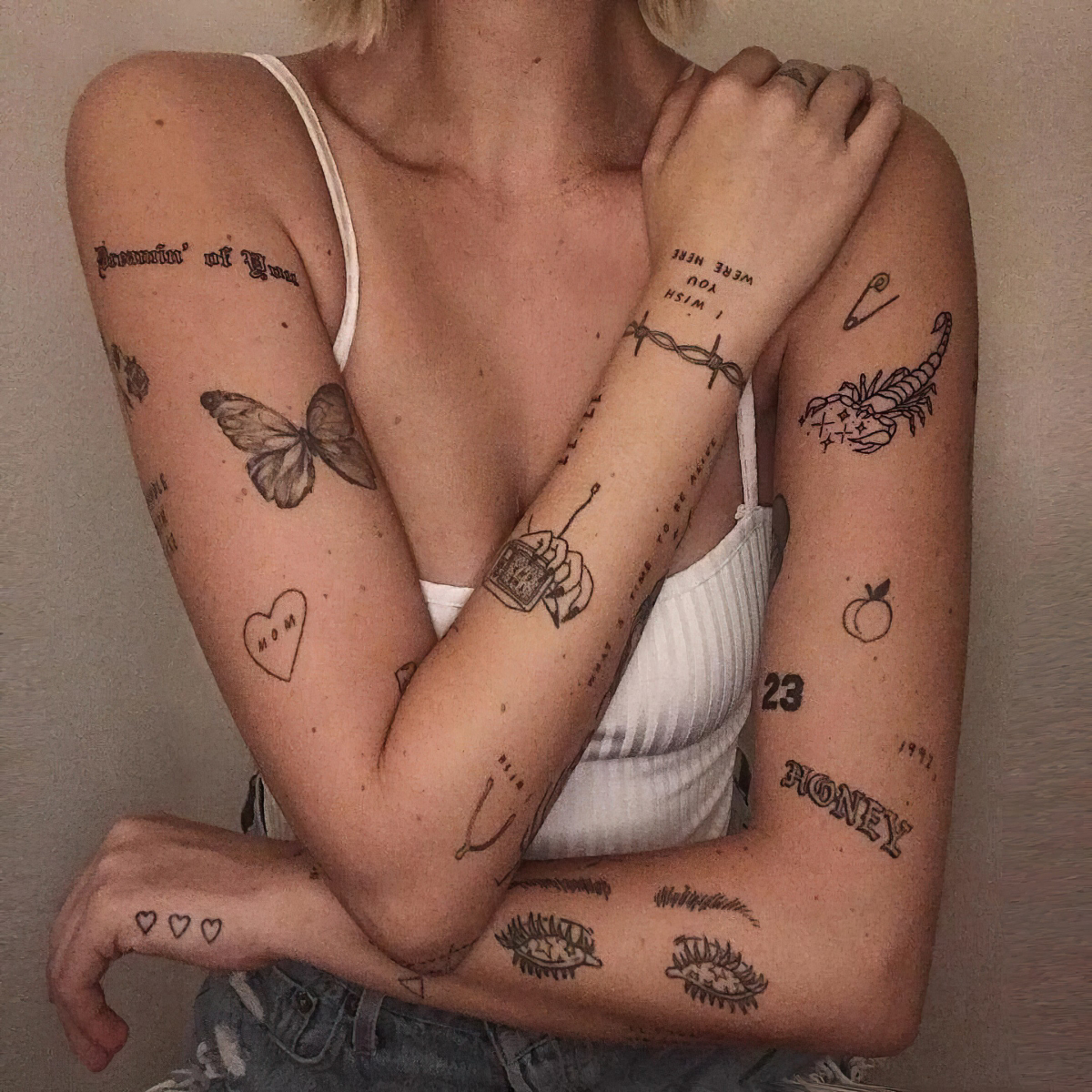
The Practical Guide: Getting It Done Right
If you’re serious about getting an ignorant style tattoo, you need to approach it the right way. A great idea can be totally ruined by picking the wrong artist or just having unrealistic expectations.
How to Find the Right Artist
First off, please do not just search for the cheapest artist you can find. A badly done “ignorant” tattoo isn’t a cool aesthetic choice; it’s just a bad tattoo that will turn into a blurry, ugly mess in a few years.
When you’re vetting an artist’s portfolio, here’s what to look for:
- Clean, Consistent Lines: Zoom in on their photos. Are the lines solid black, not gray? Is the thickness consistent from end to end? Do the lines meet at clean, sharp angles?
- Solid Color: If there’s color, is it fully saturated and smooth, like a sticker? Or is it patchy and weak?
- HEALED PHOTOS: This is the big one. I can’t stress this enough. Any tattoo can look decent when it’s fresh, red, and swollen. You need to see what their work looks like after it’s fully healed (at least a month old). This shows their real skill. Do the lines still hold their shape? Is the black still black?
- Originality: A good artist in this style has their own unique voice and drawings. If their whole portfolio is just tracing other people’s work, that’s a major red flag.
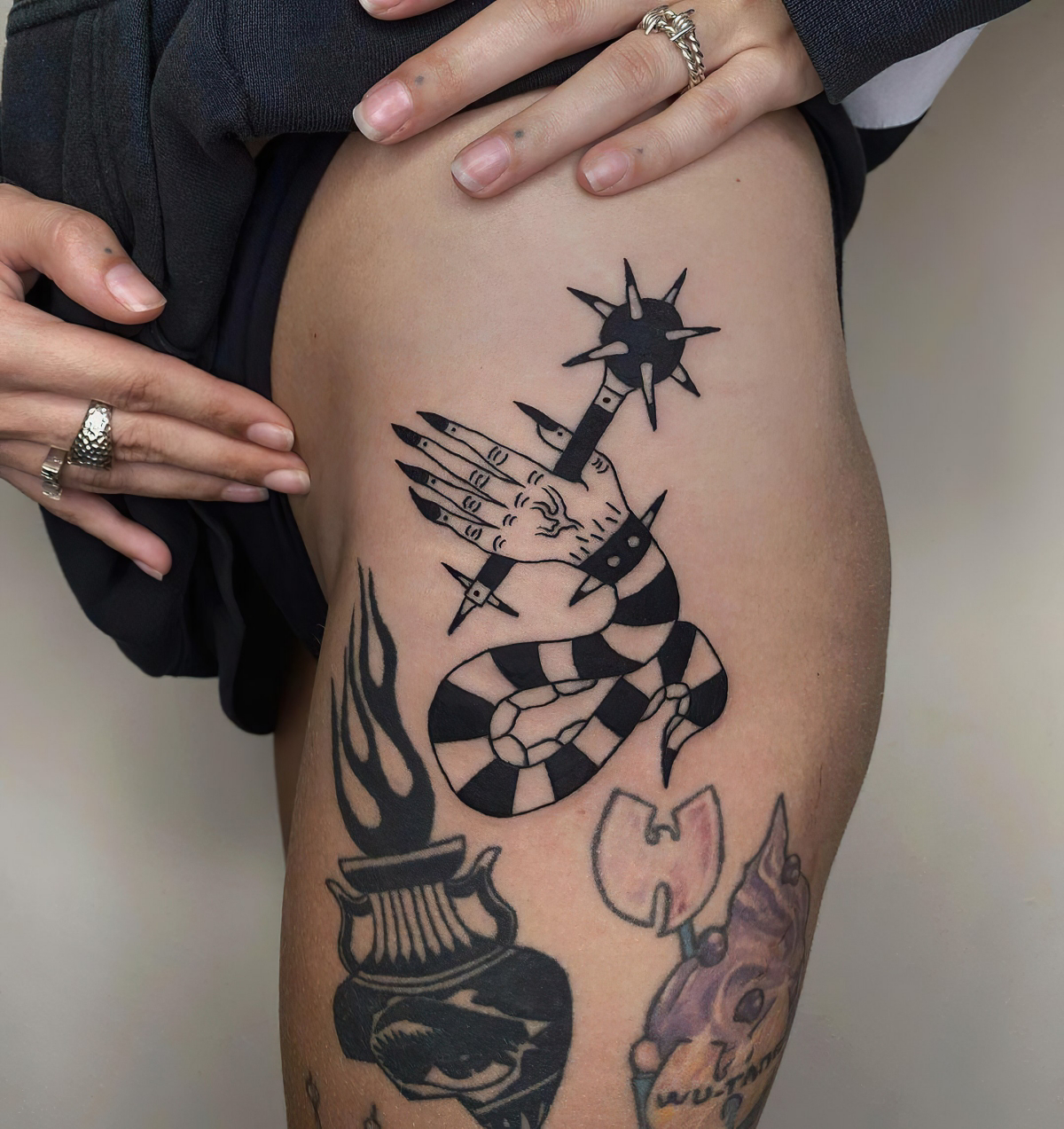
By the way, a great place to start your search is on Instagram. Try searching hashtags like
ignorantstyletattoo,
ignoranttattoo, or even more niche ones like
brutaltattoo. If you have a city in mind, add that to the search (e.g.,
nyctattoo, #londontattoo) and then dive into the portfolios you find.
Cost vs. Value: What to Expect
A well-done tattoo from a professional in a licensed shop is an investment in your body. Don’t expect an ignorant style tattoo to be cheap just because the design looks simple. You aren’t paying for complexity; you’re paying for the artist’s years of training, their skill, the sterile single-use equipment, high-quality ink, and a clean environment.
So, what’s a realistic budget? Most reputable shops have a minimum, which usually runs between $100 and $200, even for something tiny. For a good palm-sized piece from an established artist, you could be looking at anywhere from $250 to $600, depending on their experience and how expensive the city is. A cheap tattoo is a huge red flag—it often means they’re cutting corners on safety, and that’s a risk you never want to take.
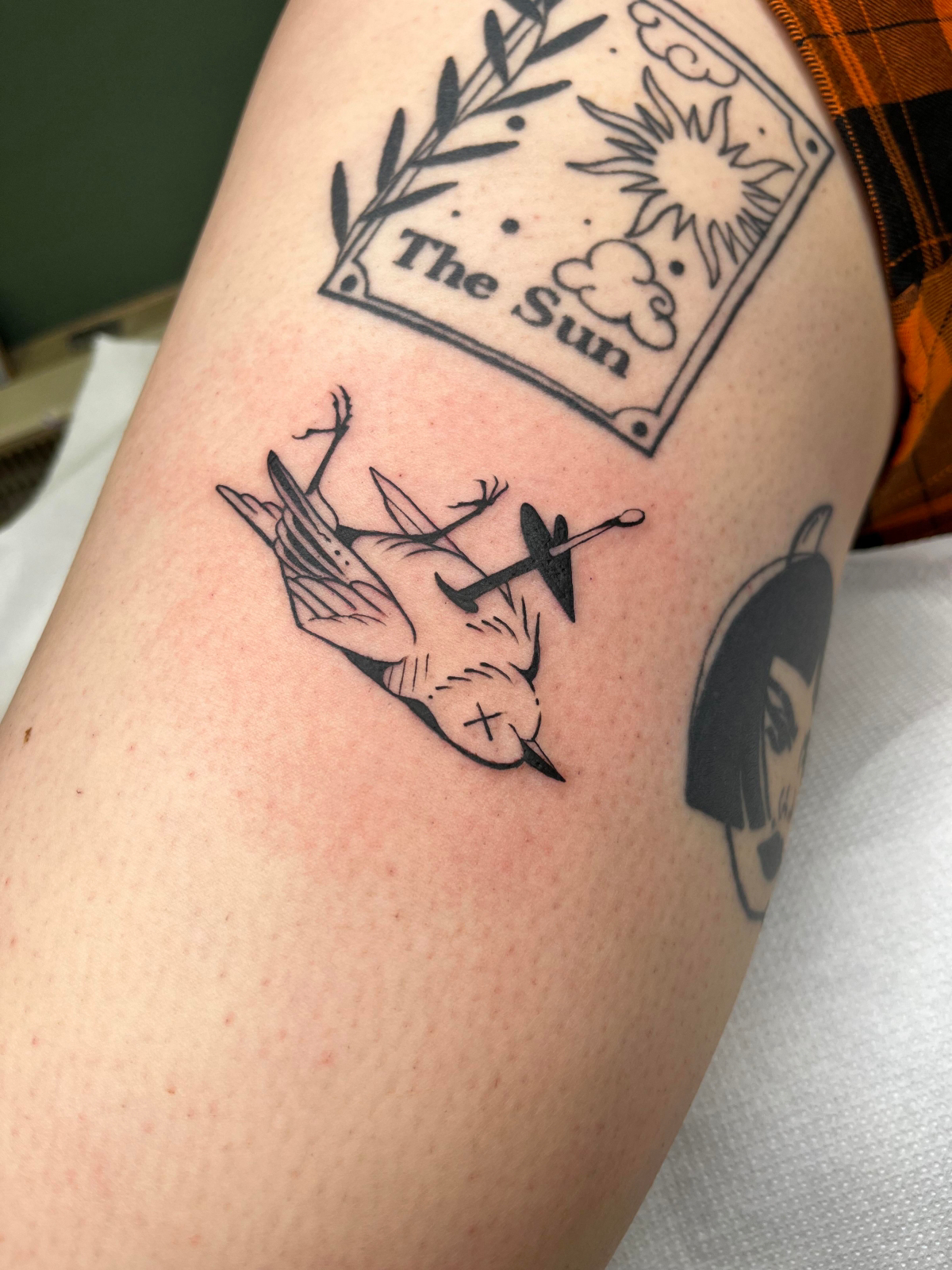
How to Prepare for Your Appointment
Want to make your artist’s life easier and get a better tattoo? It’s simple. The day before your appointment, don’t drink alcohol—it thins your blood and can make you bleed more. Get a good night’s sleep. On the day of, eat a big, solid meal an hour or two before you go in, and make sure you’re well-hydrated. A prepared body sits better, bleeds less, and makes for a much smoother process for everyone.
The Pro vs. The Scratcher: A Critical Difference
This is probably the most important part of this whole conversation. The raw aesthetic of ignorant style can sometimes be confused with the look of a cheap, amateur, or “scratcher” tattoo. They are NOT the same. One is a professional stylistic choice; the other is a dangerous gamble with your health.
A professional tattoo artist can give you that raw, edgy look safely. They work in a controlled environment where everything is sterile and single-use. An amateur working out of their home offers none of that. Imagine drawing a line with a sharpie on a paper towel—see how the ink fuzzes out and bleeds at the edges? A blowout from an inexperienced hand looks just like that, but it’s permanent and under your skin. A pro’s line will be crisp and sharp. A scratcher’s line will be shaky, scarred, and often blown out. The healing process is night and day, too. A pro’s work heals cleanly, while a scratcher’s often gets infected and turns into a scarred-up disaster.
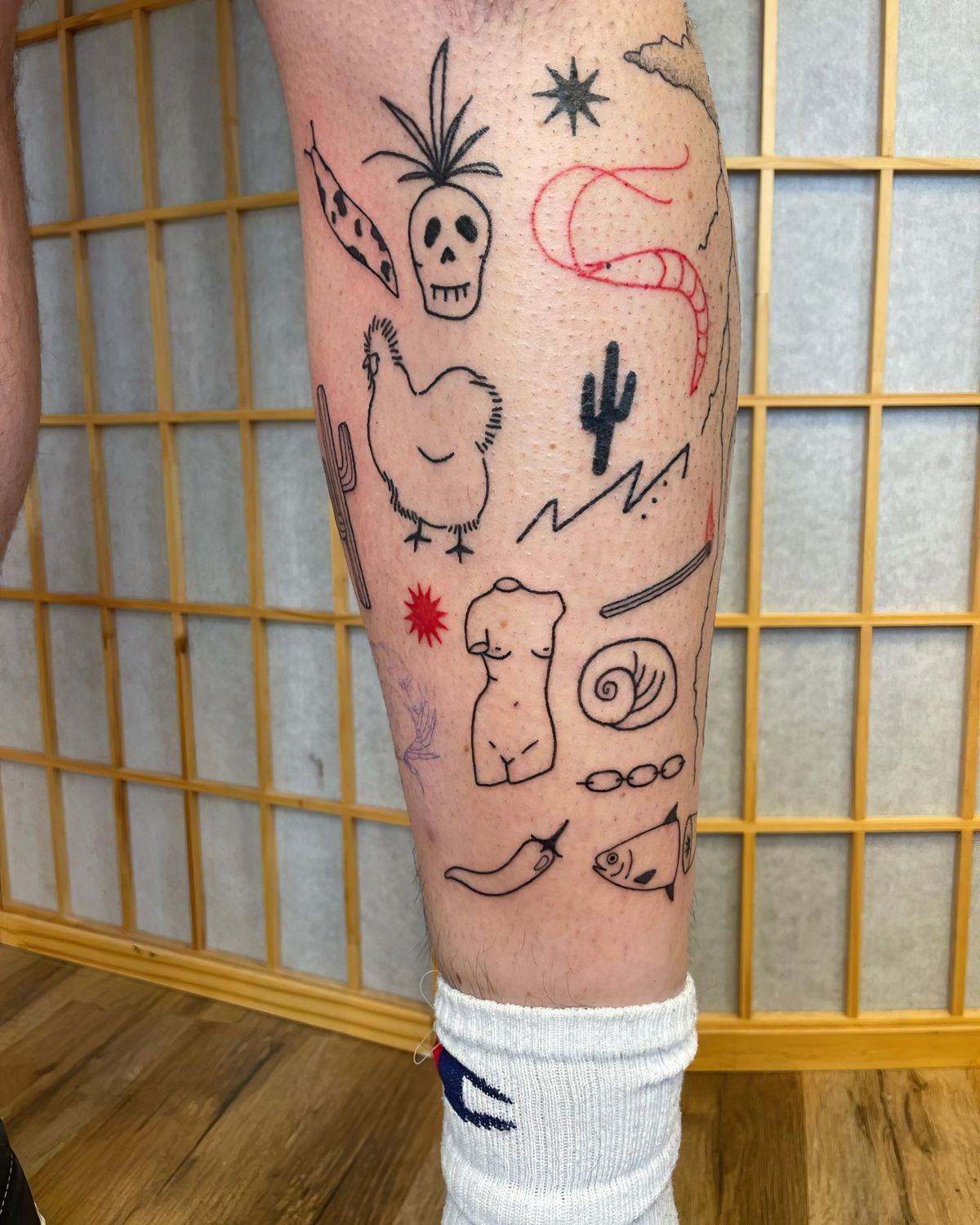
The risk of serious infections like Staph or bloodborne diseases like Hepatitis is very real with unlicensed tattooers. It’s just not worth it.
Aftercare: Your Job Starts When the Tattoo Is Done
Getting the tattoo is only half the battle! Now you have to heal it. Proper aftercare is crucial, and thankfully, it’s pretty straightforward.
Here’s your basic aftercare shopping list:
- Unscented Antibacterial Soap: Something mild, like Dial Gold. (about $5)
- Paper Towels: For gently patting the tattoo dry. Don’t use a fuzzy bath towel!
- Ointment: A&D or Aquaphor for the first couple of days. A small tube is all you need. (around $10)
- Unscented Lotion: For after the initial healing phase. Lubriderm or Cetaphil are great. ($8-$12)
Your artist will give you specific instructions, but the general plan is this: For the first 2-3 days, wash the tattoo gently 2-3 times a day with the soap, pat it dry with a paper towel, and apply a very thin layer of Aquaphor. After a few days, when it starts to feel dry and maybe a little flaky, switch from the ointment to a simple, unscented lotion and apply it whenever it feels tight or itchy. Do that for the next couple of weeks, and you’re golden. No swimming and no sunbathing while it’s healing!
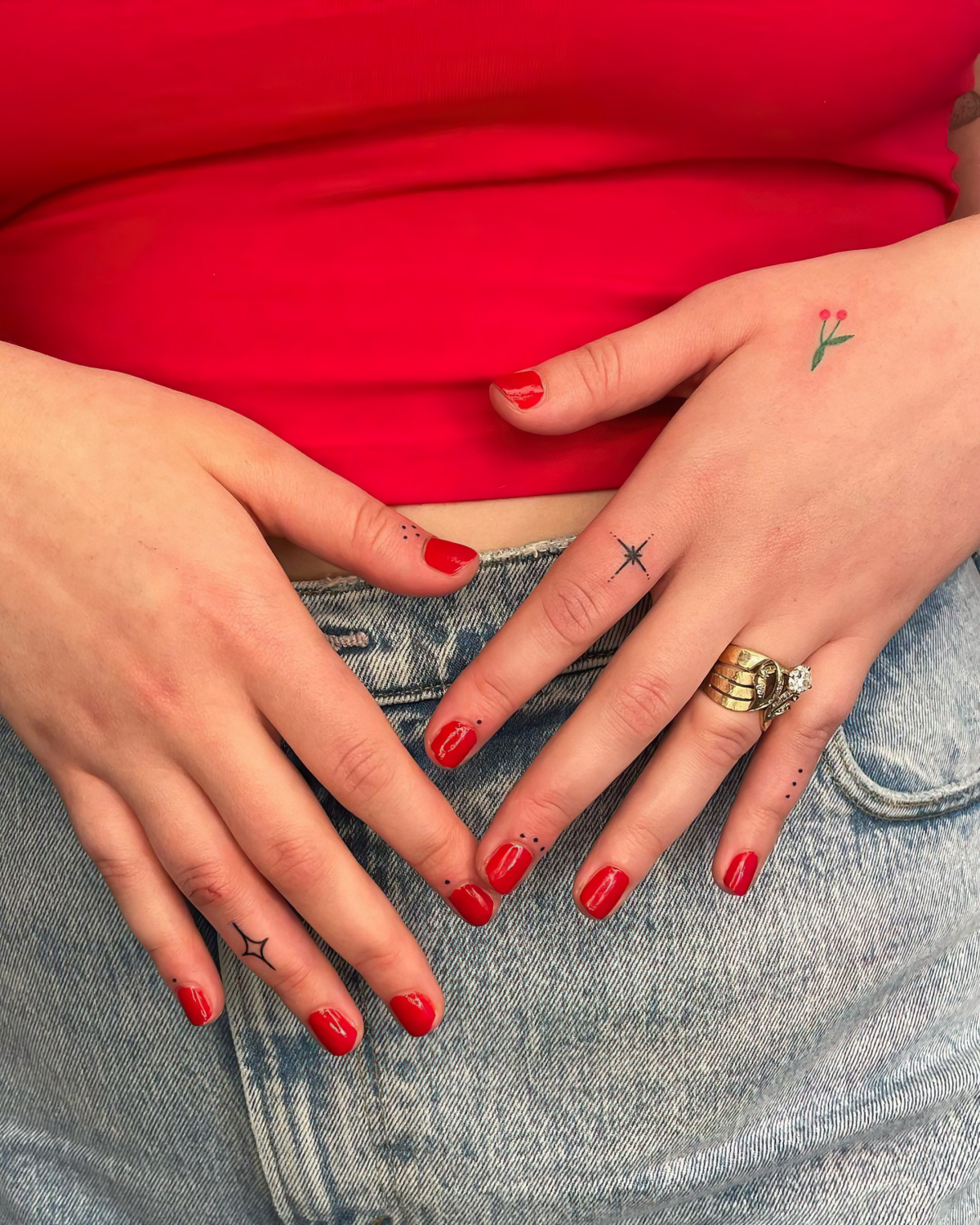
The Deeper Dive: For the Real Tattoo Nerds
For those of you who are really into this stuff, there’s more to it than just simple doodles. When applied thoughtfully, this style can be incredible.
For example, doing a full sleeve or back-piece in this style is a huge compositional puzzle. You can’t just slap a bunch of random drawings on an arm and call it a day. A skilled artist thinks about flow, balance, and negative space. I once worked on a full leg sleeve that the client wanted to feel like a sticker-bombed skateboard. We spent hours just arranging the stencils, moving dozens of designs around until the whole leg felt balanced but chaotic. The final result looked spontaneous, but it was all carefully planned. That’s the secret: planned chaos.
Part of my job is also being the voice of experience. A client might want a super detailed design the size of a quarter. I have to be the one to explain that bold lines need room to breathe. If you cram them too close together, in ten years, it’s just going to be an unreadable black blob. A good artist will guide you toward a design that will not only look great today but will still look awesome decades from now.

Ultimately, this style is a powerful, fun, and direct way to express yourself. It’s built on a rich history of counterculture and outsider art. But it absolutely demands technical precision and a deep respect for safety. When it’s done right, by a real professional, it’s not ignorant at all. It’s a very, very smart choice.
Galerie d’inspiration
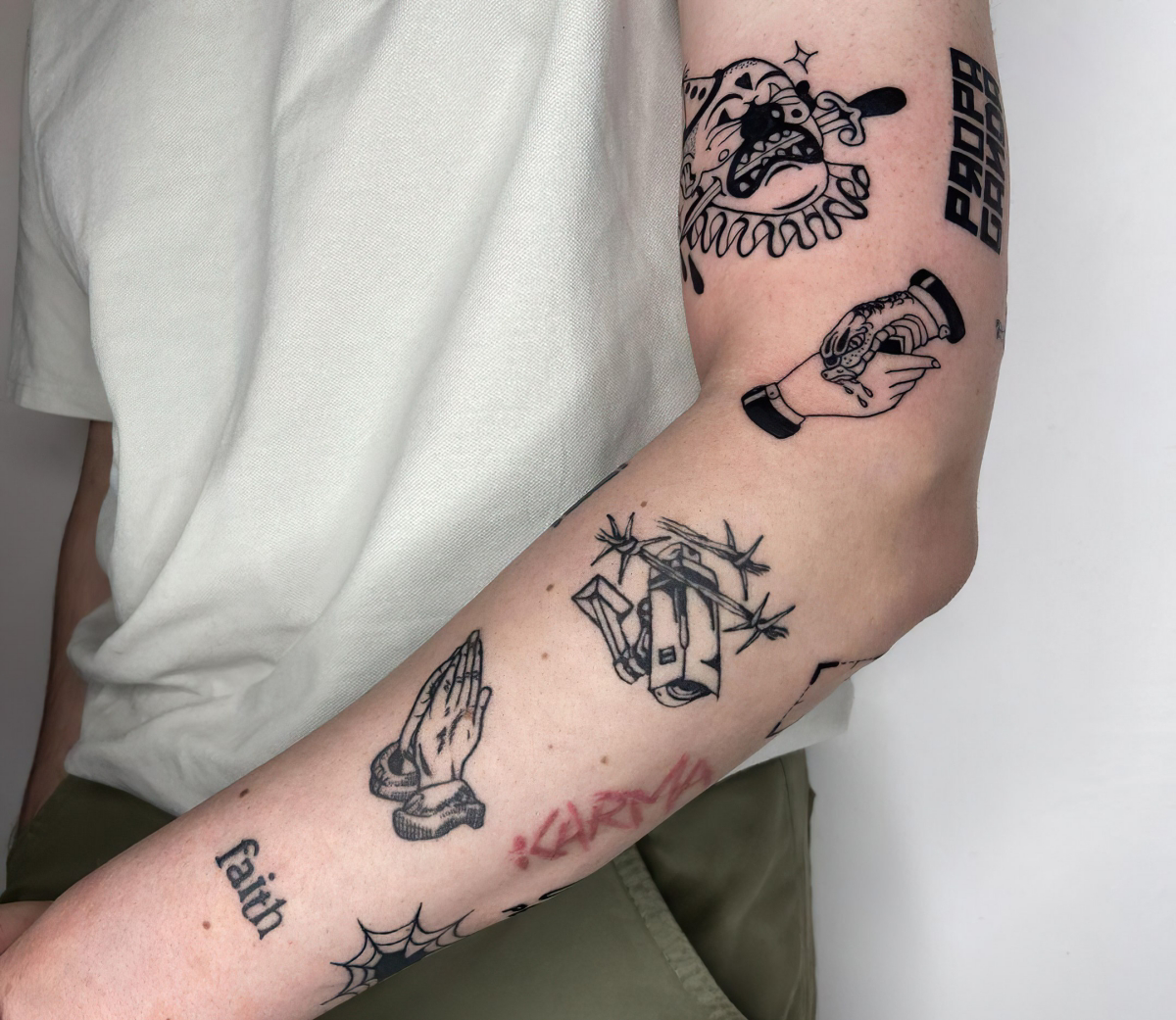
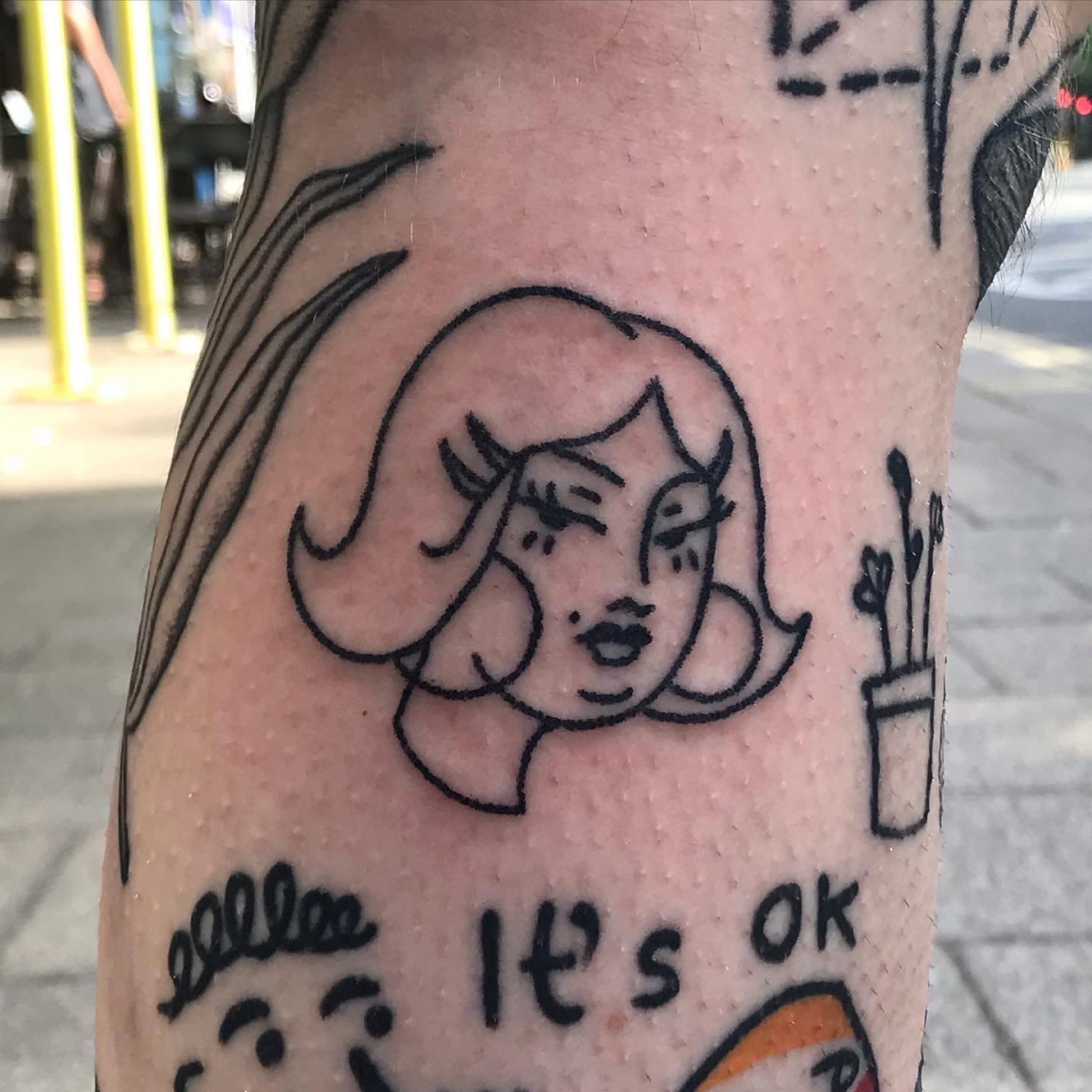
A key advantage of the ignorant style’s bold, black lines is how well they age. Unlike hyper-detailed micro-tattoos that can blur into a smudge over time, these strong lines tend to hold their shape and legibility for decades. The biggest threat isn’t blurring, but fading. To keep that black ink a deep, rich black, consistent sun protection is non-negotiable. Think of a high-SPF sunscreen like La Roche-Posay Anthelios as your tattoo’s best friend for life.
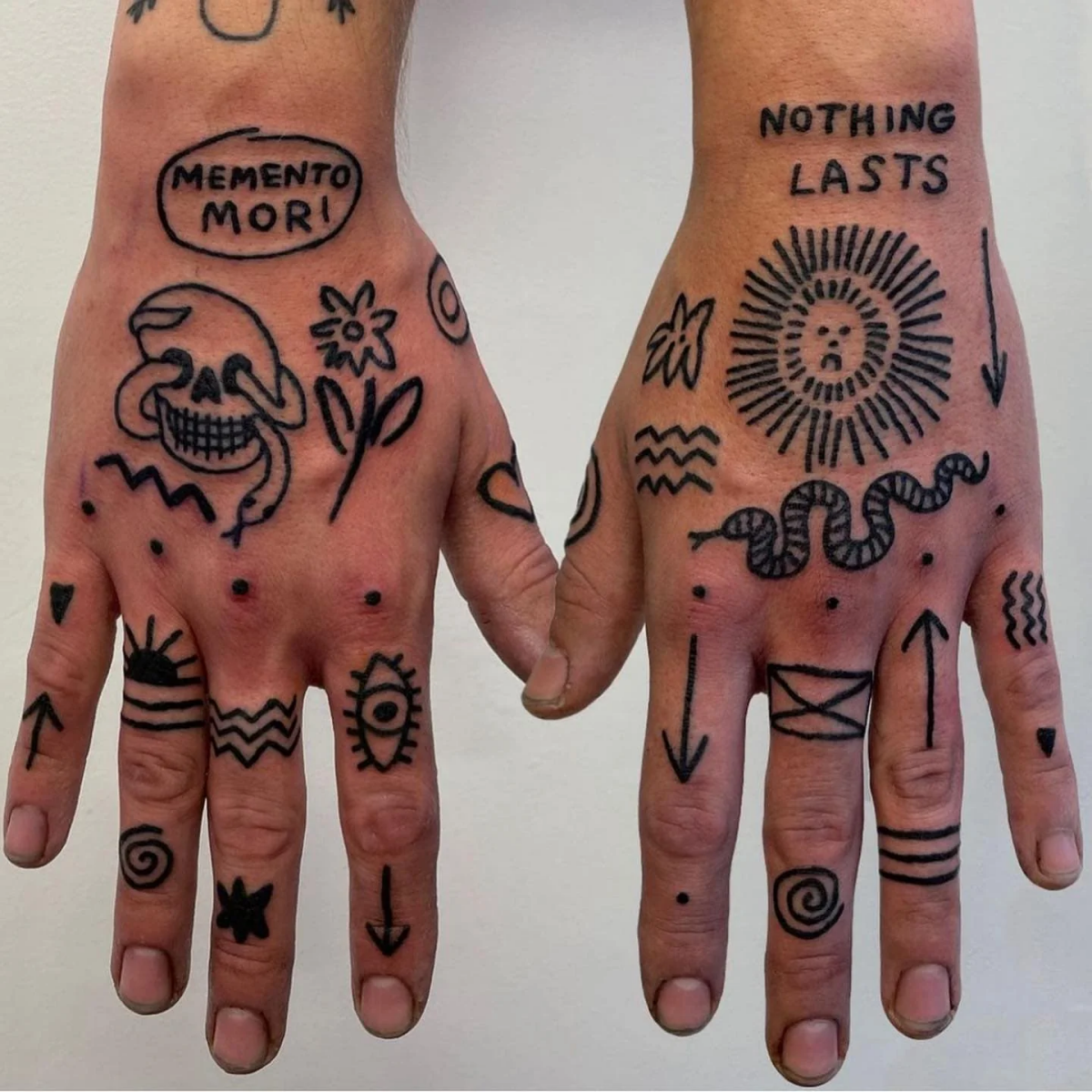
- Check for Healed Work: Don’t just look at fresh photos. A good artist will proudly show how their tattoos look months or years later.
- Line Consistency is Key: Look closely at their portfolio. Are the lines smooth, solid, and consistent in thickness? Any wobbles or blowouts are red flags.
- Read Client Reviews: Go beyond the “I love it!” comments. Look for feedback on their professionalism, cleanliness, and the overall studio experience.
- Do They Have a Clear Voice? The best artists aren’t just copying internet trends. They have a unique perspective and a recognizable style within the genre.
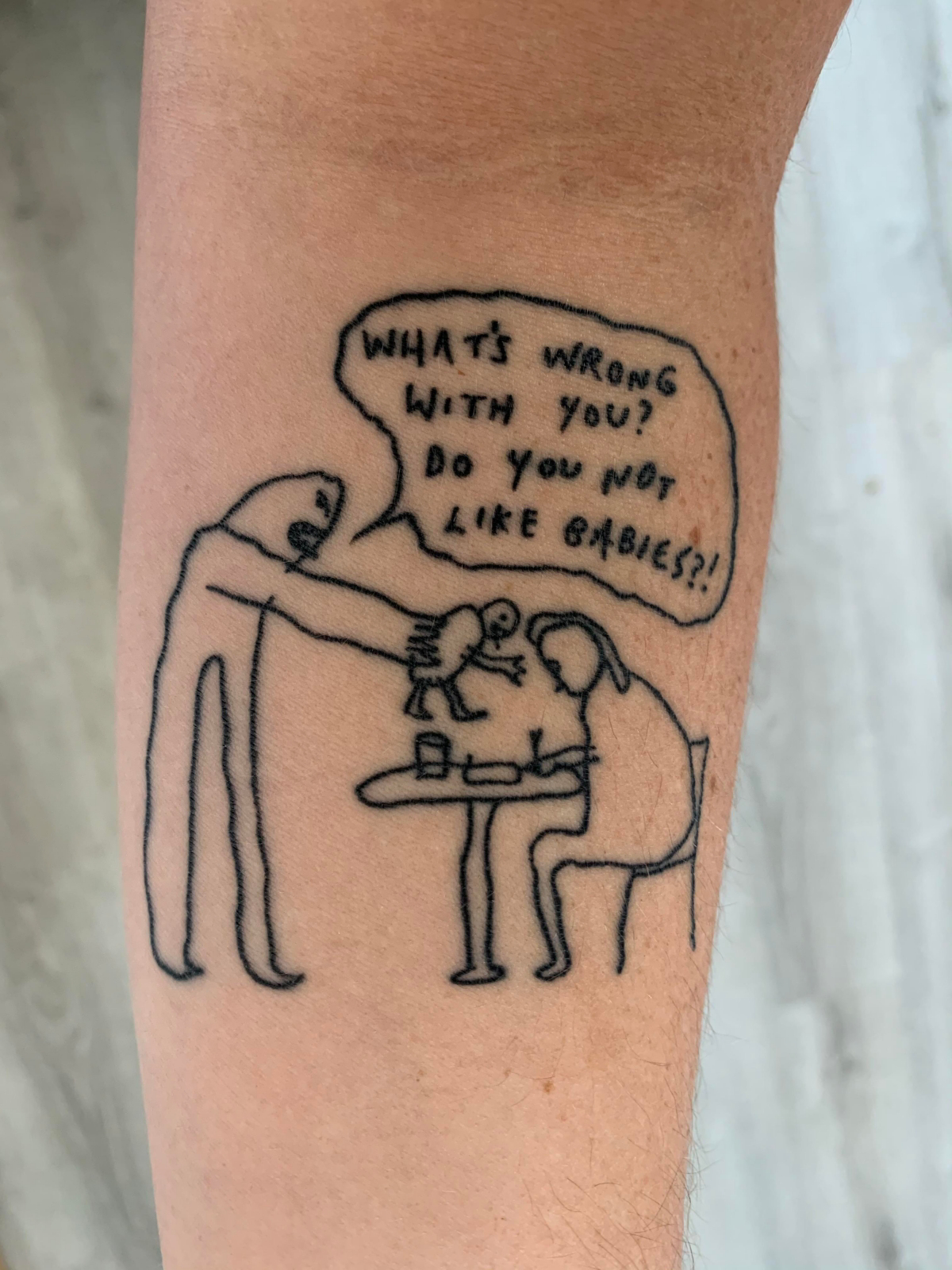
One common misconception: Because the designs are simple, people assume they’re less painful. In reality, creating those perfect, saturated, single-pass lines often requires a slower, more deliberate hand speed from the artist, which can intensify the sensation in a single area.
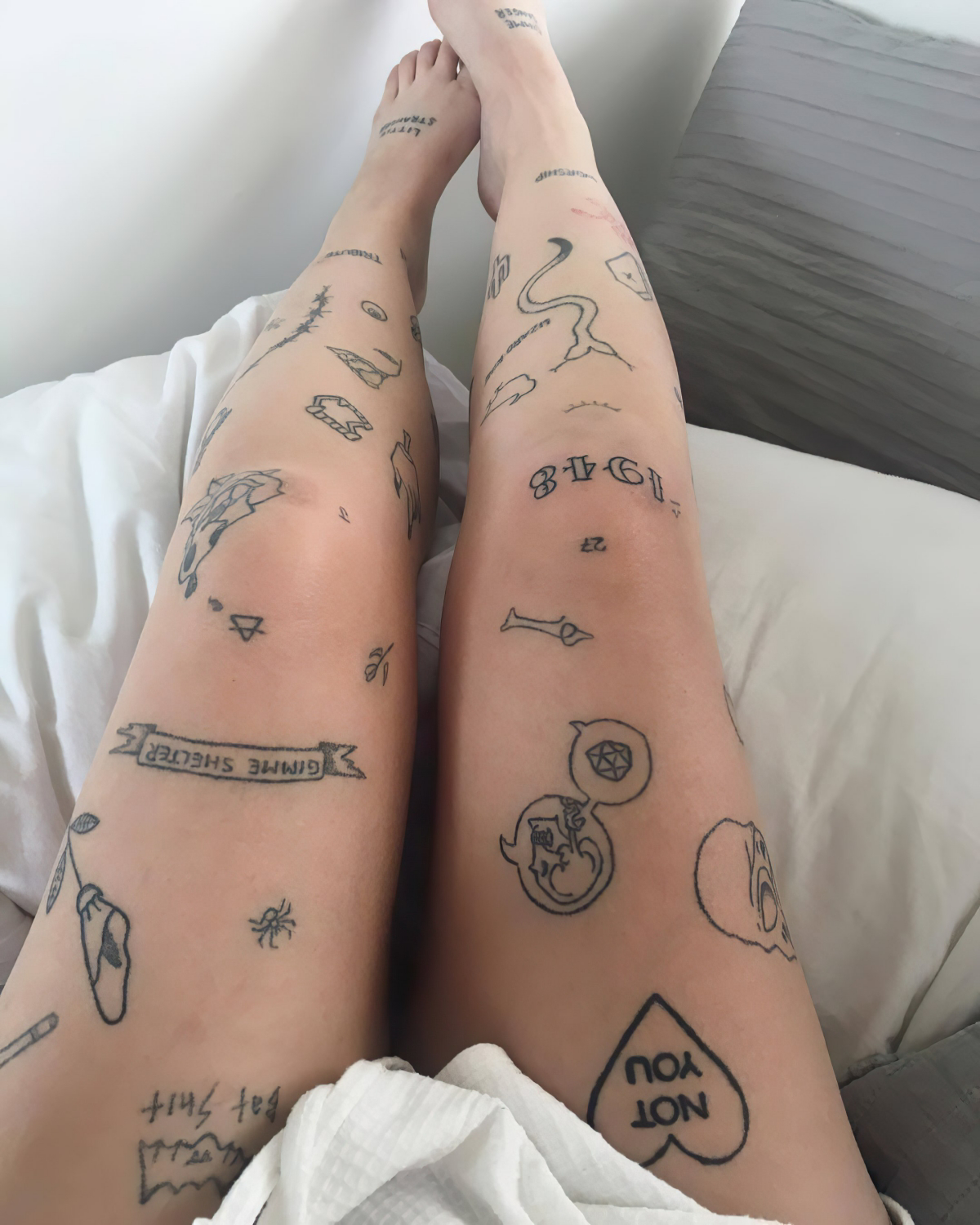
The beauty of an ignorant style tattoo is its punchy, graphic nature. But where you place it can make or break the effect. It’s about creating a moment of visual surprise. Consider these prime locations:
- The
But isn’t ignorant style always just black ink?
Not at all! While the style is defined by its strong black linework, color is often used to add impact and personality. The key is how it’s applied. Forget soft gradients or realistic shading. In ignorant style, color is typically used in solid, flat fills, almost like a coloring book. Think a single, vibrant block of red, a splash of primary blue, or a pop of acidic yellow. The color doesn’t define the form; it accentuates the bold lines that do.
Flash Design: This is a pre-drawn design from the artist’s collection. It’s a fantastic way to get a piece from an artist you admire in their purest style, and it’s often more affordable and quicker to book.
Custom Piece: This is a design created just for you based on your idea. It’s more personal but requires more collaboration, a longer wait time, and a higher budget.
For your first ignorant style piece, choosing from an artist’s flash can be a great entry point to ensure you get their signature look.
A truly solid, single-pass black line is the technical hallmark of a great ignorant style tattoo.
This isn’t achieved with just any black ink. Artists specializing in this style often have a preferred
- It feels uniquely
- It feels uniquely
